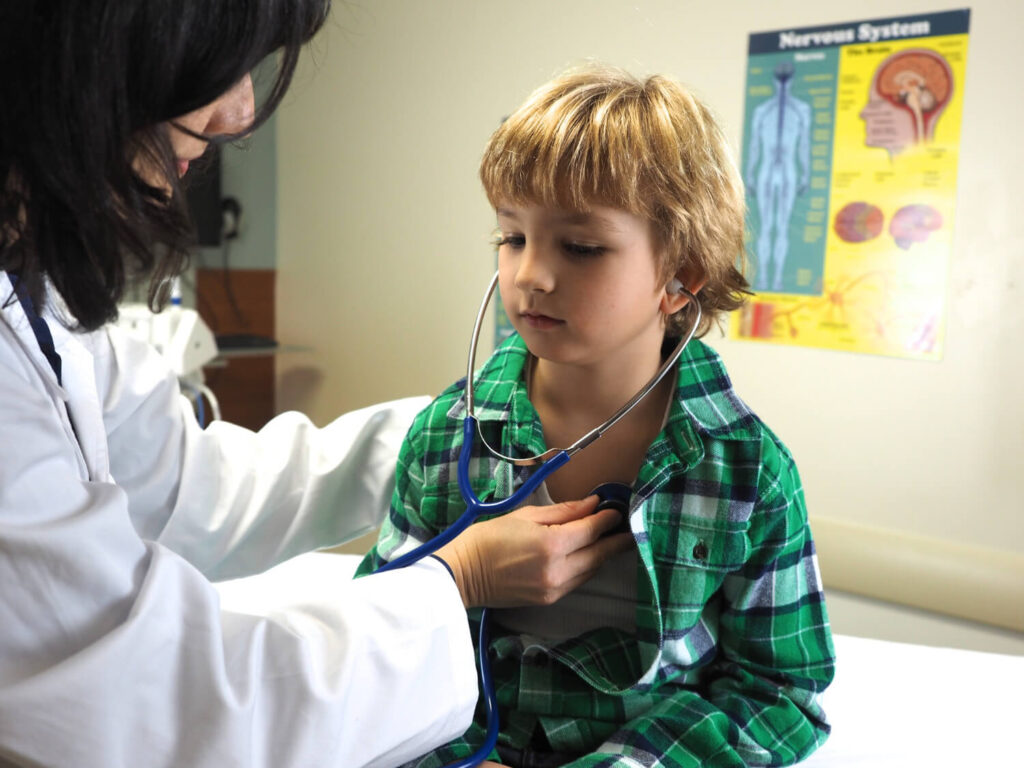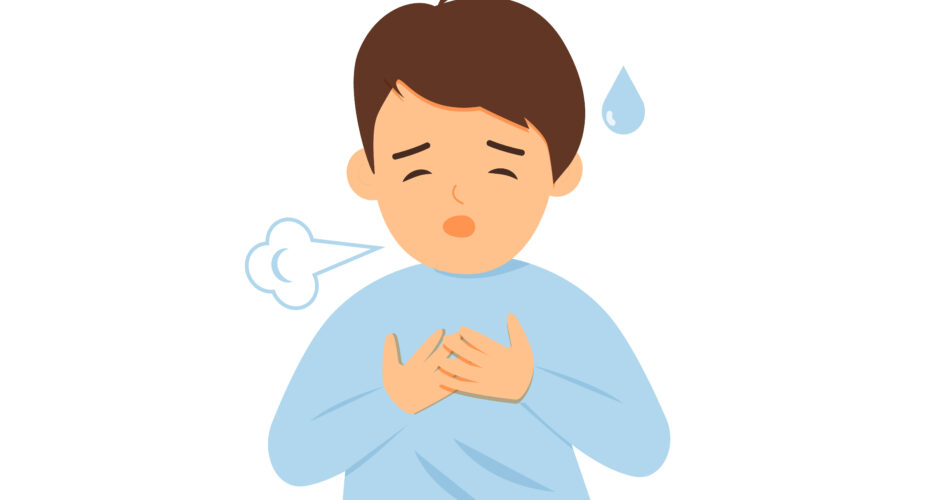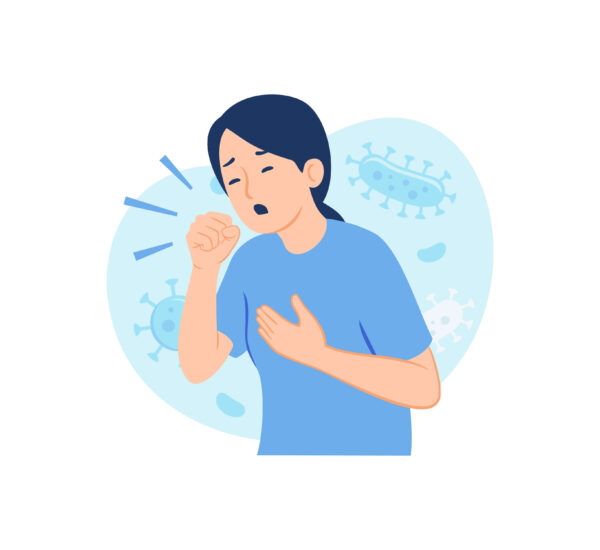A child’s health should be a top priority, considering they haven’t developed a stronger immune system yet. So, it is the duty of the parents to ensure a safer environment for their child. Unfortunately, there are certain conditions like childhood asthma that can still occur despite the efforts to keep them safe. With such a threat, it is crucial to be well aware of the possible symptoms, causes, and early prevention steps to ensure condition management.
That’s why if you are a first time parent and need assistance on how to protect your child from this type of asthma, then this blog is for you. By understanding the condition deeply, parents can effectively manage their child’s condition. Let’s begin!
Understanding Childhood Asthma

Childhood asthma is a chronic lung disease that affects the airways in a child’s lungs. The exact cause of asthma is not fully understood, but it is believed to be a combination of genetic and environmental factors. When a child has asthma, their airways become inflamed, making it difficult for air to pass through. This inflammation leads to the common symptoms of asthma, such as wheezing, coughing, and shortness of breath.
By working closely with a healthcare provider, parents can develop an asthma action plan for their child to help manage their child’s asthma symptoms and reduce the frequency and severity of asthma attacks.
When Does Childhood Asthma Occur
It commonly occurs at any age, but patients develop it in early childhood. Younger children, including toddlers, are more susceptible to developing asthma due to their developing immune systems and smaller airways. However, asthma can also develop in older children. That’s why, it is ideal to catch the condition early on to prevent its possible effect on the patient’s health. Thus, ensuring safety and helping children to breathe freely.
Being aware of the signs and symptoms of asthma in children of all ages should be a priority, especially for parents. Doing so helps them to ensure that their child receives the appropriate treatment and support necessary to manage their asthma and live a healthy and active life.
Common Symptoms to Recognize
It is important for parents to monitor their child’s symptoms and seek medical help if they notice any persistent or worsening symptoms. Recognizing the common symptoms of childhood asthma is crucial for parents in managing their child’s condition effectively. Common symptoms include the following:
- persistent coughing
- wheezing
- shortness of breath
- chest tightness
- difficulty breathing

Exploring Causes of Asthma in Children
This respiratory condition in children can stem from various factors. Remember that childhood asthma is a long-term condition that patients must learn to manage. That can only happen through understanding the common causes or triggers.
Here are some of the common causes of childhood asthma:
Genetic Factors
One of the common reasons why a person develops asthma at such a young age is due to their family history of asthma. Having a family member that suffers from asthma increases the probability of the child to have the illness as well. Furthermore, genetic components may contribute to more severe asthma symptoms in children.
Children with severe asthma may require more aggressive treatment and management to control their symptoms. It’s important to discuss your child’s family history with their healthcare provider and inform them if there are any known cases of asthma in the family. This information can help guide the diagnosis and treatment of childhood asthma.
Environmental Causes
In addition to genetic factors, environmental causes can trigger asthma symptoms in children. Exposure to tobacco smoke, either from parental smoking or secondhand smoke, can irritate the airways and worsen asthma symptoms. It is important to create a smoke-free environment for your child to reduce their exposure to harmful chemicals and irritants.
Furthermore, another environmental trigger like dust mites can affect the child’s respiratory health. These microscopic organisms thrive in bedding, carpets, and upholstered furniture. Taking steps to reduce dust mite exposure, such as using allergen-proof covers on mattresses and pillows and regularly washing bedding in hot water, can help manage asthma symptoms.
Lastly, air pollution, including outdoor air pollution and indoor pollutants like chemicals and fumes, can also contribute to asthma symptoms. Ensuring good ventilation in your home, using air purifiers, and minimizing exposure to pollutants can help reduce asthma triggers and improve your child’s respiratory health.
Allergies
On the other hand, the case of allergies can play a significant role in childhood asthma. Allergens, such as pollen, pet dander, mold, and dust mites, can trigger asthma symptoms in children who are allergic to these substances. These allergens can trigger asthma symptoms when inhaled, and lead to increased respiratory distress.
If your child has known allergies, it’s essential to work with their healthcare provider to identify specific triggers and develop a management plan that includes both allergy and asthma control strategies.
Underlying Illness or Infection
Meanwhile, another common trigger for asthma in young children is the possible role of underlying illnesses or infections. For instance, lung diseases such as bronchitis and pneumonia can cause inflammation and narrowing of the airways, leading to increased respiratory distress.
Aside from that, children with underlying lung diseases may be more susceptible to asthma attacks and may require additional treatment to manage their symptoms. It’s important to discuss any underlying health conditions with your child’s healthcare provider to ensure comprehensive management of their asthma.
Additionally, hay fever is another underlying illness that can become a trigger for asthma attack. Allergic rhinitis is one of the common respiratory conditions that occurs due to exposure from allergens. Thus, resulting in difficulty in breathing, sneezing, and congestion of the sinus. Thus, wheezing and other symptoms of asthma may occur.
In terms of Infections, particularly respiratory infections like the common cold or the flu, it can also trigger asthma symptoms. These infections can cause increased inflammation in the airways, making it harder for your child to breathe. It’s important to practice good hygiene, such as frequent handwashing, to reduce the risk of respiratory infections in children with asthma.
Impact on a Child’s Life
With the different causes of asthma, childhood asthma can definitely have a significant impact on a child’s life. The children can experience limitations in their ability to participate in sports and other recreational activities. With the constant factors present, it can result in asthma attacks and remove the enjoyment during their childhood stage in life.

In short, playing under the sun and other strenuous activities are forbidden to avoid a possible health risk from happening. Thus, changing their way of life at such an early age.
Furthermore, their social and emotional aspects can be affected. For instance, challenges may arise such as children feeling different from their peers or worry about having an asthma attack in public. They may also miss school days or social events due to asthma symptoms or healthcare appointments. Thus, leading to feelings of isolation and being left out from activities and experiences.
That’s why it is important for parents to give a lending hand and guide their children towards the proper management of this condition. Doing so will help them connect with their peers through participation and socialization despite the challenges and limitations that the condition may bring.
When to Consult a Healthcare Provider

Consulting a health care provider is essential for threats such as breathing problems and other complications from having childhood asthma. This condition affects the child’s airways leading to constricted amounts of air for breathing. Thus, the child’s lungs suffer in the long run and can be fatal if left untreated.
It’s important to seek medical evaluation for a proper diagnosis and to receive the child’s asthma action plan. As a parent, if your child experiences severe asthma symptoms or have the following, seek immediate medical attention:
- Stopping in the middle of a sentence to catch a breath
- Using stomach muscles to breathe
- Chest and sides pulling in as they breathe
- Blue lips or fingernails
- Increasing shortness of breath with decreased wheezing
- Severe coughing or wheezing
- Trouble walking or talking
- Fast heartbeat
- Chest pain
These symptoms may indicate a severe asthma attack that requires immediate medical intervention. Do not hesitate to go to the nearest emergency room if your child experiences any of these signs.
Childhood Asthma Prevention Strategies
Preventive Measures
Once the check up is done and the treatment plan is available, it is important to follow it correctly to combat the triggers and slowly strengthen the body’s defense against certain causes of asthma. That includes taking the prescribed asthma medicines.
Naturally, most medicines can provide possible side effects, but as long as you follow the right dosage and span of intake, it can’t harm your body.
Moreover, there are certain strategies that an individual may practice to avoid the inhalation of allergens. Usually, avoiding allergens at home can happen by making sure to clean the house regularly to avoid build up of dust, molds, and other possible allergens. Meanwhile, outdoor triggers like smoke and other air pollutants are not avoidable. Thus, usage of a face mask can come handy.
Some preventive measures include:
- Avoiding asthma triggers, such as tobacco smoke, dust mites, and pet dander.
- Keeping your child’s environment clean and free from allergens.
- Use inhaler or nebulizer as prescribed by the doctor
- Using air purifiers and keeping windows closed during high pollen seasons.
- Following an asthma action plan provided by your child’s healthcare provider.
- Ensuring your child receives regular immunizations, including the flu vaccine.
- Encouraging good hand hygiene and respiratory etiquette to prevent respiratory infections.=
Remember, as a parent, there are several situations that you can’t handle at all times. That’s why educating your child about their condition and how to properly manage them can make a huge difference. By taking such proactive steps, you can empower your child to live a healthy and active life.
Schedule Immunization

Aside from the methods mentioned above, another form of protection for children is immunization. Schedule the vital immunizations with a pediatrician to ensure your child is safe from respiratory infections and minimize the risk of asthma exacerbations.
Respiratory infections, such as the common cold and the flu, can trigger asthma symptoms and lead to worsening respiratory distress. By keeping up with your child’s immunizations, you can reduce their susceptibility to these infections and help maintain good asthma control.
Consult with your child’s healthcare provider to ensure that the children are up to date on all recommended vaccines and discuss the importance of immunization in managing their asthma.
Frequently Asked Questions
How do doctors diagnose asthma in children?
Doctors diagnose asthma in children through a combination of medical history, physical exams, and lung function tests. They may also consider symptoms like wheezing, coughing, and shortness of breath. In some cases, doctors might recommend allergy testing or other specialized tests to confirm the diagnosis. It’s crucial for parents to communicate any concerns or observations about their child’s breathing patterns to the healthcare provider for accurate diagnosis and treatment.
When do asthma begin in children?
Asthma can begin in children at any age, but it often starts in early childhood. Symptoms may first appear before the age of 5, with wheezing being a common indicator. It is one of the signs of asthma that parents must observe and know to seek help. Early detection and intervention play a crucial role in managing asthma effectively and improving the child’s quality of life. If you notice any concerning symptoms in your child, consult their healthcare provider promptly for proper evaluation and support.
How can parents help their child manage asthma?
Parents play a crucial role in helping their child manage asthma. By following an asthma action plan provided by their child’s healthcare provider, identifying and avoiding triggers, ensuring proper medication use, and being an overall support system. Doing so will help empower children to effectively manage their asthma and lead a healthy and active life in the long run.
Conclusion
Suffering from a condition at an early age can be a challenging situation for both the parent and their children, especially if it can put their health at risk. That’s what childhood asthma can do as it affects the respiratory health of the child, which can restrict their activities due to several triggers.Ensure timely intervention to happen and help the patient to live their life without constant worry of asthma attack. Book an online consultation or schedule a physical consultation with a pediatric pulmonologist to address this respiratory concern.



